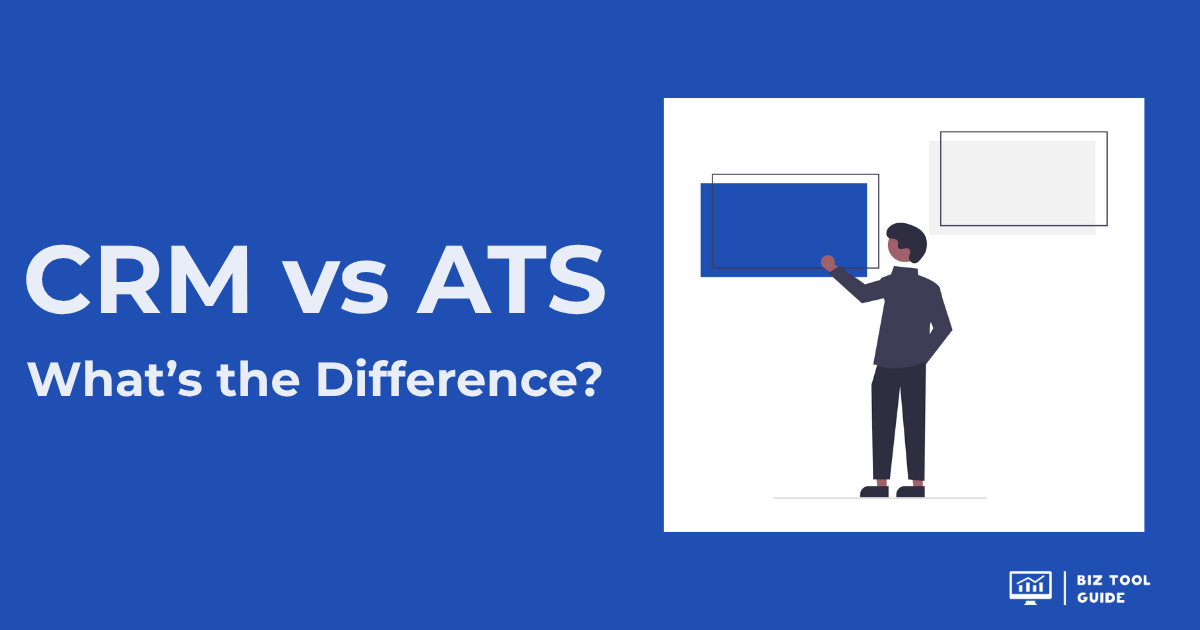CRM vs ATS: What’s the Difference and Which Do You Need?
Last updated November 2025 • 6-minute read
🧩 Introduction
If you’ve ever tried to manage clients or candidates in a spreadsheet, you already know the pain.
At some point, every growing business faces the same question:
Do I need a CRM or an ATS — or both?
While they look similar, these tools serve very different purposes.
Here’s how to tell them apart — and how to choose the right one for your workflow.
💼 What Is a CRM?
CRM stands for Customer Relationship Management — software built to manage interactions with leads, prospects, and clients.
It’s your digital Rolodex for tracking who you talk to, what stage they’re in, and how close they are to buying.
Common CRM Features
- Contact & company records
- Deal pipelines
- Email integration
- Task reminders & follow-ups
- Workflow automation
- Sales analytics & reporting
Real-World Example
Many consultants, agencies, and small businesses use a CRM to handle lead generation, email follow-ups, and client onboarding — all in one place.
💡 Pro tip: The best CRM is the one you’ll actually use. Complexity kills consistency.
🧠 What Is an ATS?
ATS stands for Applicant Tracking System — software designed to manage job openings and candidates instead of customers.
It helps recruiters and hiring teams organize every stage of the recruitment process.
Common ATS Features
- Job posting & distribution
- Resume parsing & keyword search
- Candidate pipelines (Applied → Interview → Offer → Hired)
- Email & SMS communication
- Hiring analytics and reporting
Real-World Example
An ATS keeps hiring teams organized by showing where every candidate is in the process — just like a CRM does for sales leads.
⚖️ CRM vs ATS: Side-by-Side
Feature CRM ATS
Primary Goal Manage clients & sales Manage candidates & jobs
Users Sales teams, consultants Recruiters, HR teams
Data Focus Companies, deals, communication Resumes, stages, notes
Outcome Closed deal Hired candidate
Example Tool RecruitCRM (CRM + ATS Hybrid)
🔄 Where They Overlap
Modern tools are blurring the line between CRM and ATS.
The best example? RecruitCRM.
RecruitCRM combines both systems in one clean, easy-to-use platform — perfect for recruiting agencies, staffing firms, and consultants who manage both clients and candidates.
It gives you:
- CRM pipelines for client relationships
- ATS pipelines for candidate management
- Built-in email & automation
- Chrome extension for sourcing
- Resume parsing & job board integrations
You no longer need two systems or messy spreadsheets — everything lives under one login.
🧭 Which Do You Need?
- Do you sell services to clients? -> CRM
- Manage applicants or resumes? -> ATS
- Do both (client + candidate tracking)? -> Hybrid (RecruitCRM)
- Want automation & follow-ups? -> CRM or RecruitCRM
- Need job posting integration? -> ATS or RecruitCRM
If you’re a recruiter, staffing agency, or solo consultant, a hybrid system like RecruitCRM will cover both your sales and recruiting workflows — without doubling your software costs.
🧰 How They Work Together
If you ever need both systems side-by-side, here’s how they complement each other:
- CRM manages sales, clients, and partner relationships.
- ATS manages candidates and job openings.
- RecruitCRM merges both into a single workspace.
You can run your full business pipeline — from client acquisition to candidate placement — without switching tools.
💬 Final Thoughts
Choosing between a CRM and an ATS really comes down to who you manage:
- Customers = CRM
- Candidates = ATS
- Both = RecruitCRM
If you recruit, sell, or do both, you’ll love having everything in one place.
RecruitCRM’s hybrid system makes it easy to stay organized, automate outreach, and track revenue — all while saving you time every day.
🔗 Recommended Tool
Free Plan Link: Join RecruitCRM via Biz Tool Guide
🚀 Next Steps
- Try RecruitCRM free for 14 days.
- Import your client and candidate data.
- Build a pipeline that handles both — automatically.
- Follow Biz Tool Guide for more no-fluff SaaS breakdowns and automation tips.
.png)





